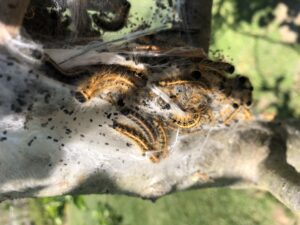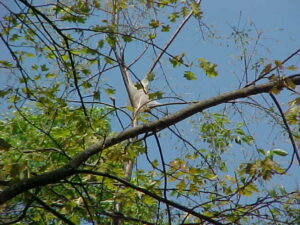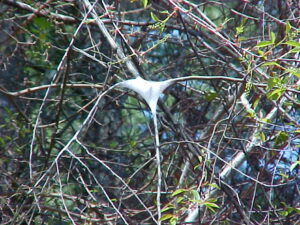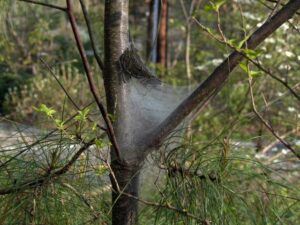Pest Alert – Eastern Tent Caterpillar
go.ncsu.edu/readext?929859
en Español / em Português
El inglés es el idioma de control de esta página. En la medida en que haya algún conflicto entre la traducción al inglés y la traducción, el inglés prevalece.
Al hacer clic en el enlace de traducción se activa un servicio de traducción gratuito para convertir la página al español. Al igual que con cualquier traducción por Internet, la conversión no es sensible al contexto y puede que no traduzca el texto en su significado original. NC State Extension no garantiza la exactitud del texto traducido. Por favor, tenga en cuenta que algunas aplicaciones y/o servicios pueden no funcionar como se espera cuando se traducen.
Português
Inglês é o idioma de controle desta página. Na medida que haja algum conflito entre o texto original em Inglês e a tradução, o Inglês prevalece.
Ao clicar no link de tradução, um serviço gratuito de tradução será ativado para converter a página para o Português. Como em qualquer tradução pela internet, a conversão não é sensivel ao contexto e pode não ocorrer a tradução para o significado orginal. O serviço de Extensão da Carolina do Norte (NC State Extension) não garante a exatidão do texto traduzido. Por favor, observe que algumas funções ou serviços podem não funcionar como esperado após a tradução.
English
English is the controlling language of this page. To the extent there is any conflict between the English text and the translation, English controls.
Clicking on the translation link activates a free translation service to convert the page to Spanish. As with any Internet translation, the conversion is not context-sensitive and may not translate the text to its original meaning. NC State Extension does not guarantee the accuracy of the translated text. Please note that some applications and/or services may not function as expected when translated.
Collapse ▲Every Spring, cherries, oaks and many other trees are attacked by a web forming caterpillar. Eastern tent caterpillars are active in spring. They emerge at about the same time new leaves appear in cherry, apple and other host trees.
The caterpillars build their nests in the crotches of branches in many types of trees. They don’t feed inside the nests, but congregate there during the day and in rainy weather. During the night, the moth larvae strip the leaves from branches within a several feet of their nests.
Wherever the larvae crawl, they leave a fine thread of silk behind. After a few days, you can easily see silken pathways from the webs to the first good feeding site.
When the caterpillars mature after four to six weeks, they scatter, spin cocoons and pupate. They emerge as reddish-brown moths, which deposit hundreds of eggs in masses. The little wads of eggs will stick around through the summer, fall and winter. About nine months later, they’ll hatch into tiny larvae that will pitch their tents in the trees again.
These insects defoliate trees, stripping all the leaves off some trees.
Control
Since they are in the crotches of limbs, it is difficult if not impossible to prune these critters out. If you can reach the nest, break it open using a stick so that the birds can eat the caterpillars. Insecticides are sometimes the only option. Bt is a biological product that is effective at eliminating the insects.









